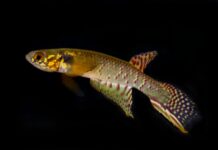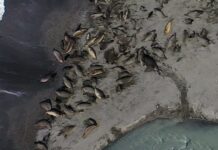The sight of a young red kite soaring effortlessly over the Spanish countryside might seem unremarkable at first glance. However, it signifies a remarkable conservation triumph – a story that circles back on itself from Britain to Spain and illuminates both the power of species recovery and the enduring threats facing these majestic birds.
Nearly 40 years ago, the red kite was a ghost in its native Britain. Habitat loss and persecution had driven them to near extinction, leaving only a handful of breeding pairs clinging to survival in Wales. A determined effort began in the late 1980s and early 1990s: chicks from Spain and Sweden were carefully introduced into the Chiltern Hills on the border of Oxfordshire and Buckinghamshire. This reintroduction program was a resounding success. Today, red kites flourish across the UK, with an estimated 6,000 breeding pairs representing around 15% of the global population. The species has bounced back so dramatically that it’s now a familiar sight soaring above woodlands and hillsides.
This avian comeback story serves as a model for another project unfolding in Extremadura, southwestern Spain. Once abundant there, red kites dwindled to fewer than 50 breeding pairs due to a combination of threats: eagle owls preying on chicks, illegal poisoning by farmers who view them as livestock competitors, and electrocution from power lines.
The solution? A twist on the original success story – sending back young British-born red kites to bolster their Spanish cousins. Since 2022, under special licenses granted by Natural England, over 120 chicks primarily from Northamptonshire have embarked on a journey of conservation. They are transported to Spain via Madrid and then flown 240 miles south to a wildlife hospital in Villafranca de los Barros, run by the organization Accion por el Mundo Salvaje (AMUS).
These young birds undergo meticulous preparations – weighing, measuring, tagging, and fitted with GPS backpacks that allow scientists to track their movements. This crucial data helps researchers understand how the chicks adapt to their new environment, where they forage, and whether they fall prey to predators. One key challenge: eagle owls have claimed half of the newly released chicks in 2023 alone. AMUS has adjusted its release strategies to minimize this risk, and efforts are underway to modify power lines to prevent electrocution.
The ultimate success hinges on these birds reaching sexual maturity – a perilous milestone with only about a quarter surviving their first years. But each fledgling represents hope for the future of the red kite in Extremadura. AMUS hopes that within a few years, this reintroduction will lead to the formation of more breeding pairs, spreading throughout formerly inhabited areas and ultimately rebuilding the Spanish population.
This international effort underscores not just the resilience of these birds but also the complex web of threats they face. While the UK’s success story offers hope, it also highlights the global interconnectedness of conservation efforts and the enduring battle against illegal persecution – a persistent danger highlighted by the stark numbers in the Life EuroKite project which revealed over 1,344 birds of prey killed across Europe between 2009 and 2023. For now, the young red kites released in Spain take flight as ambassadors for their species, carrying with them the legacy of both triumph and ongoing struggle.






































































